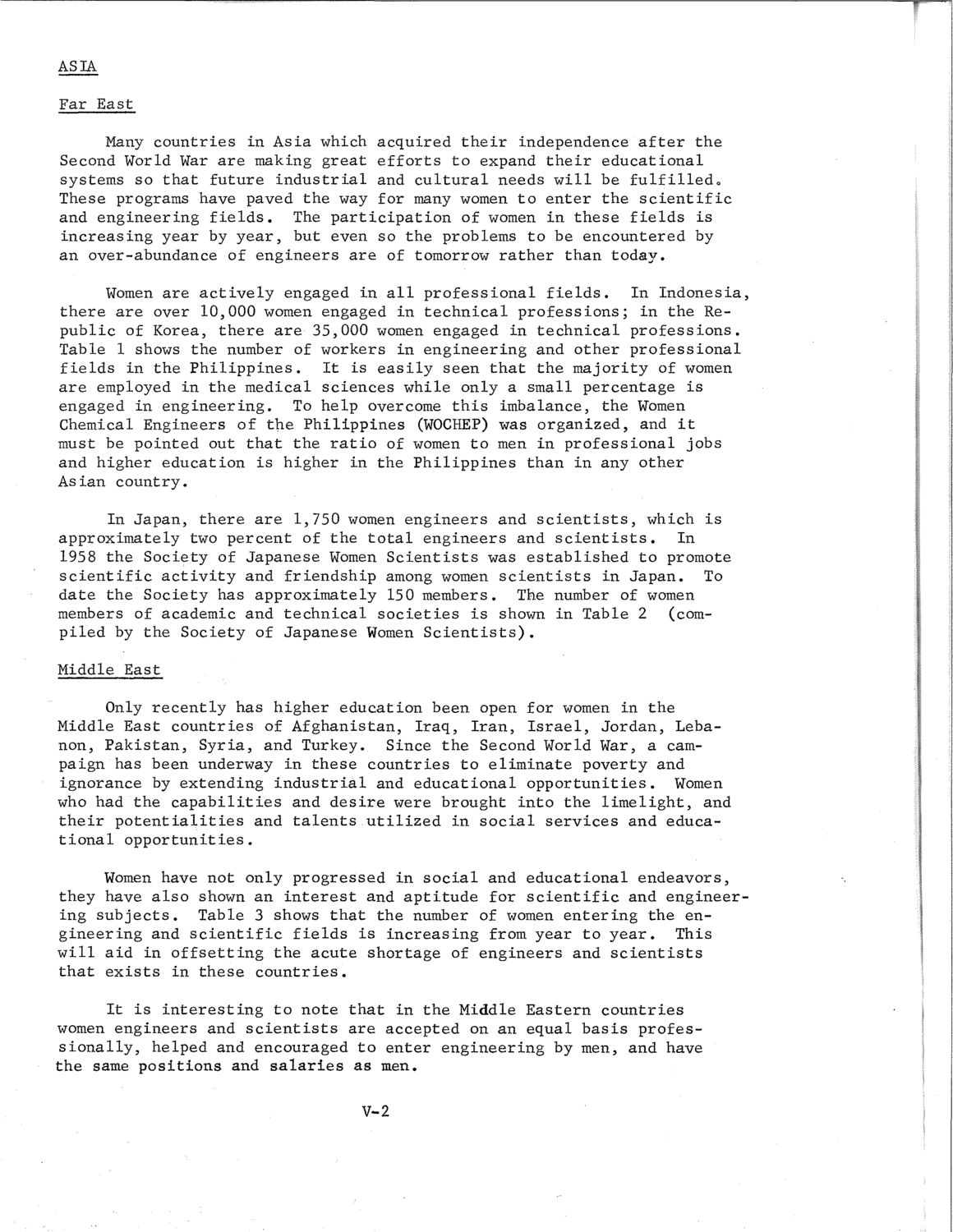| |
| |
Caption: SWE - Proceedings of the First International Conference of Women Engineers and Scientists
This is a reduced-resolution page image for fast online browsing.

EXTRACTED TEXT FROM PAGE:
ASIA Far East Many countries in Asia which acquired their independence after the Second World War are making great efforts to expand their educational systems so that future industrial and cultural needs will be fulfilled,, These programs have paved the way for many women to enter the scientific and engineering fields. The participation of women in these fields is increasing year by year, but even so the problems to be encountered by an over-abundance of engineers are of tomorrow rather than today. Women are actively engaged in all professional fields. In Indonesia, there are over 10,000 women engaged in technical professions; in the Republic of Korea, there are 35,000 women engaged in technical professions. Table 1 shows the number of workers in engineering and other professional fields in the Philippines. It is easily seen that the majority of women are employed in the medical sciences while only a small percentage is engaged in engineering. To help overcome this imbalance, the Women Chemical Engineers of the Philippines (WOCHEP) was organized, and it must be pointed out that the ratio of women to men in professional jobs and higher education is higher in the Philippines than in any other Asian country. In Japan, there are 1,750 women engineers and scientists, which is approximately two percent of the total engineers and scientists. In 1958 the Society of Japanese Women Scientists was established to promote scientific activity and friendship among women scientists in Japan. To date the Society has approximately 150 members. The number of women members of academic and technical societies is shown in Table 2 (compiled by the Society of Japanese Women Scientists). Middle East Only recently has higher education been open for women in the Middle East countries of Afghanistan, Iraq, Iran, Israel, Jordan, Lebanon, Pakistan, Syria, and Turkey. Since the Second World War, a campaign has been underway in these countries to eliminate poverty and ignorance by extending industrial and educational opportunities. Women who had the capabilities and desire were brought into the limelight, and their potentialities and talents utilized in social services and educational opportunities. Women have not only progressed in social and educational endeavors, they have also shown an interest and aptitude for scientific and engineering subjects. Table 3 shows that the number of women entering the engineering and scientific fields is increasing from year to year. This will aid in offsetting the acute shortage of engineers and scientists that exists in these countries. It is interesting to note that in the Middle Eastern countries women engineers and scientists are accepted on an equal basis professionally, helped and encouraged to enter engineering by men, and have the same positions and salaries as men. V-2
| |